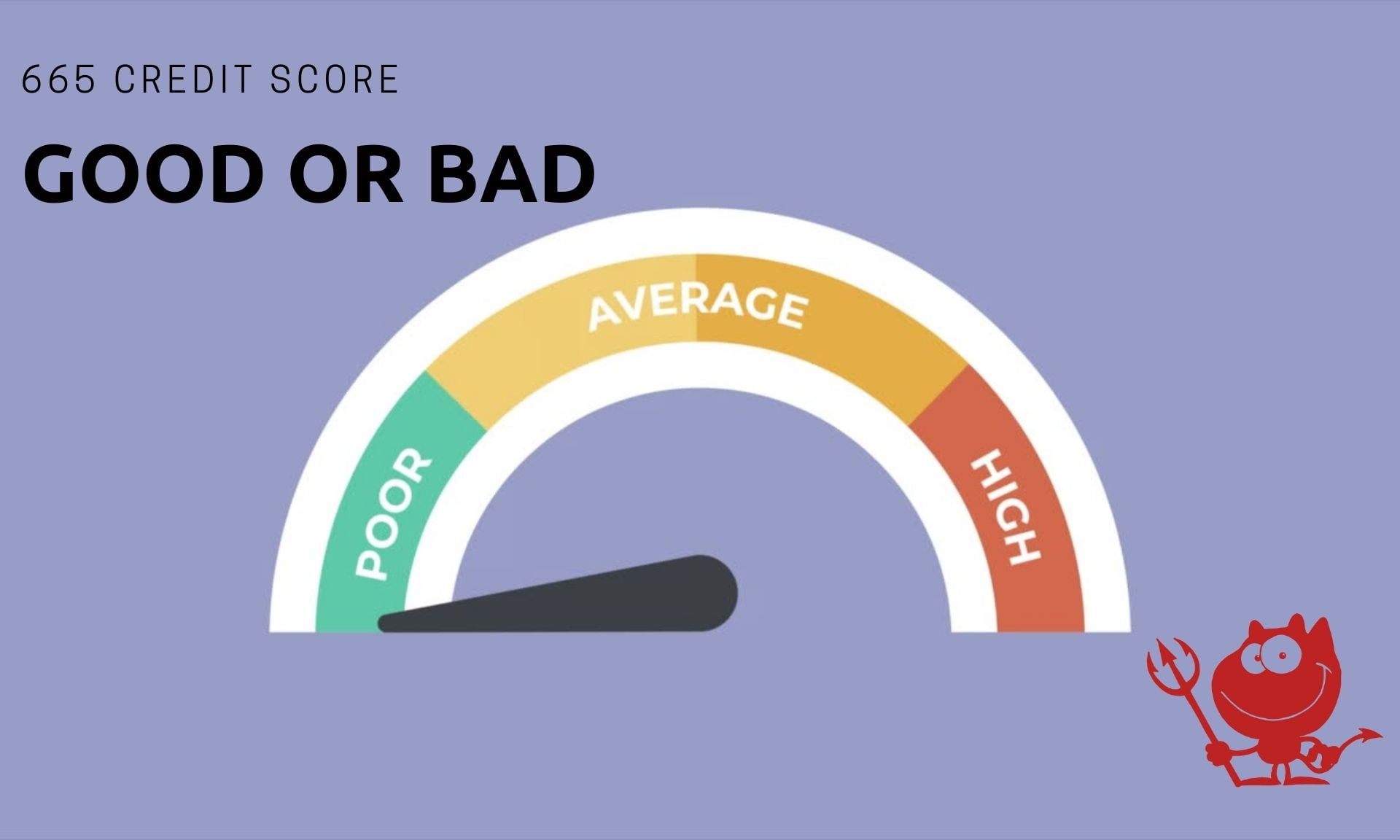When it comes to credit, a 665 credit score can either be a stepping stone or a stumbling block. In this comprehensive guide, we’ll delve into the intricacies of this numerical rating, understanding its implications, and most importantly, discovering how to elevate it into a valuable asset.
Is 665 Credit Score good?

The Fair Range and What It Signifies
A 665 credit score falls within the “Fair” range, which spans from 580 to 669. This range is inhabited by approximately 17% of all consumers. Statistically, it’s worth noting that 28% of consumers with scores in the Fair range are likely to encounter financial difficulties in the future. Let’s explore this conundrum in more detail.
From a Lender’s Perspective
Lenders often approach individuals with a FICO® Score in the Fair range with caution. This skepticism arises from the higher risk of delinquency associated with lower credit scores. On the flip side, lenders who specialize in serving “subprime” borrowers may be willing to work with individuals in this range. However, it’s crucial to be aware that they typically charge higher fees and impose steep interest rates. This sharp contrast becomes evident when consumers possess FICO® Scores in the “Good” range (670-739) or higher, as they are generally offered significantly better borrowing terms.
What is a Good Credit Score?
Before analyzing 720 specifically, it helps to know the credit score ranges. FICO and VantageScore categorize scores as:
- 800-850: Exceptional
- 740-799: Very Good
- 670-739: Good
- 580-669: Fair
- 300-579: Poor
So a “good” score starts at 670, but to unlock the best loan rates, you need to reach very good or exceptional. This context helps assess 720.
How to Increase Your 665 Credit Score
Realizing the Potential
It’s important to understand that the average FICO® Score stands at 714, which is notably higher than the 665 score you currently hold. This indicates that there’s substantial room for improvement. In fact, approximately 70% of U.S. consumers have FICO® Scores that are higher than 665. Your score is tantalizingly close to the “Good” credit score range of 670-739. With strategic actions, not only can you reach this range, but you can also exceed it, thereby gaining broader access to credit and loans at more favorable interest rates.
The Path to Enhancement
The journey to improving your credit score begins with a comprehensive assessment of your FICO® Score. The accompanying report, drawing from your unique credit history, provides valuable insights into areas that need improvement. By focusing on the recommendations outlined in this report and adopting habits that promote good credit scores, you can expect consistent score enhancements, leading to broader access to credit.
READ ALSO: 650 Credit Score: What You Need to Know
Overcoming Challenges with Fair Credit
Identifying the Obstacles
Individuals with FICO® Scores in the Fair range often face credit management challenges. An alarming 41% of Americans with a FICO® Score of 665 have credit reports that include late payments of 30 days past due. Additionally, these reports may list late payments and collections accounts, which signify a creditor’s relinquishment of debt collection, often selling the obligation to a third-party collections agent.
Road to Recovery
It’s vital to understand that each person’s journey to a FICO® Score of 665 is unique. However, those in the Fair range often share credit history challenges. Major negative events, such as foreclosures or bankruptcies, are not uncommon in this group and can severely lower scores. While full recovery from such setbacks can take up to a decade, proactive steps taken now can lay the foundation for score improvement.
The Anatomy of a Credit Score
Understanding the Components
Credit scores, such as the FICO® Score, are reflections of your debt-management history as recorded in your credit file. They essentially summarize your credit and bill payment habits. Good credit practices tend to yield higher credit scores, while poor or inconsistent habits result in lower scores. Here’s a detailed breakdown of the specific factors influencing your FICO® Score:
- Public Information: Any presence of bankruptcies or other public records on your credit report can significantly lower your credit score.
- Payment History: Your credit score is heavily impacted by your payment history. Delinquent accounts and late or missed payments can harm your credit score. Timely bill payments contribute significantly to a higher credit score.
- Credit Usage Rate: Your credit utilization ratio plays a pivotal role in your credit score. Maintaining a utilization rate below 30% is recommended to prevent negative impacts on your score.
- Length of Credit History: A longer credit history generally benefits your credit score. Timely payments and sound credit decisions can contribute positively to this aspect.
- Total Debt and Credit Mix: Your total outstanding debt and the types of credit you use influence your credit score. A diversified credit mix, including installment loans and revolving credit, can be advantageous.
- Recent Applications: When you apply for a loan or credit card, a hard inquiry is initiated, temporarily affecting your credit score. Maintaining timely payments can help your score recover swiftly.
READ ALSO: What Does a 710 Credit Score Mean? Is it Good or Bad?
Strategies for Enhancing Your Credit Score
Taking Action
Elevating a Fair credit score into the “Good” range doesn’t happen overnight. It requires time and effort, especially when dealing with negative issues like bankruptcy and foreclosure. Regardless of the reason for your Fair score, you can commence immediate actions to enhance your credit management. Here are some strategies:
- Explore Secured Credit Cards: Secured credit cards require a deposit equivalent to your spending limit. Consistent usage and punctual payments, reported to national credit bureaus, can contribute to credit score improvements.
- Consider Credit-Builder Loans: Many credit unions offer credit-builder loans designed to boost personal credit histories. These loans usually involve placing the borrowed money in a savings account, earning interest while being inaccessible until the loan is repaid. Timely payments are reported to national credit bureaus, benefiting your credit score.
- Contemplate a Debt-Management Plan: For those struggling to meet debt payments, a debt management plan (DMP) can provide much-needed relief. Working with a credit counseling agency to establish a workable repayment plan can aid families in financial distress.
- Punctuality Is Key: Timely bill payments are crucial. Utilize automatic payments and reminders to ensure you never miss a due date.
- Maintain a Healthy Credit Utilization Rate: Aim to keep your credit utilization rate below 30% across all accounts to prevent a negative impact on your credit score.
- Diversify Your Credit Mix: While avoiding unnecessary debt, a balanced mix of credit types, including installment loans and revolving credit, can enhance your credit score.
To Recap
A 665 FICO® Score is the starting point for building a better credit score. Elevation into the “Good” range can offer access to more credit options, lower interest rates, and reduced fees. Begin your journey by obtaining your free credit report and identifying the specific factors influencing your score. Understanding your score ranges and what constitutes a good credit score is the first step toward a brighter financial future.
FAQs
Can a 665 credit score be improved?
Yes, a 665 credit score can be improved with strategic actions, such as timely payments, responsible credit usage, and exploring credit-building options.
How long does it take to raise a Fair credit score to the Good range?
The time it takes to improve your credit score varies depending on your individual circumstances, but with consistent efforts, you can see progress within a few months to a couple of years.
What are some common challenges with a 665 credit score?
Common challenges include late payments, collections accounts, and potential difficulties in accessing credit on favorable terms.
What are the benefits of having a Good credit score (670-739)?
A Good credit score provides broader access to credit options, lower interest rates, and reduced fees on loans and credit cards.
How can I monitor my credit score and history?
You can monitor your credit score and history by obtaining free credit reports from the major credit bureaus and by using credit monitoring services.
Are there any quick fixes to improve my credit score?
Improving your credit score is a gradual process, and there are no quick fixes. It requires consistent, responsible credit management.
Can I get a loan or credit card with a 665 credit score?
You can still obtain a loan or credit card with a 665 credit score, but the terms and interest rates may not be as favorable as they would be with a higher credit score.
In other related article, What Does a 720 Credit Score Mean?





